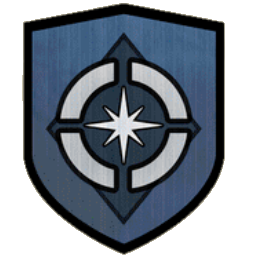The High Marches
The High Marches. A nation that has been fractured, rebuilt and reunited only to fracture again and once more rebuilt. Some would argue that like a broken bone, it grows stronger each time it breaks, but as a kingdom, it is only a matter of time before the underlying conflicts send the nation into chaos once more.
- Inspiration: Central/Eastern European Expanse.
- Primary Species: Humans (84%), Halfings (6%), Elves (4%), Gnomes, (2%) and Dwarves (4%).
- Population: ~2 million.
- Culture: High Marcher .
- Form of Government: Neo Confederate Feudalism
- Executive Branch: The Council of Lords
- Society: Feudalism, Tribal.
- Trade: Regulated, (The Commerce Committee).
- Language: West Norrhan Common.
- Technological Level: High Medieval near the coast, but otherwise lower.
- Military: Levies, Retinues and Mercenaries.
- Religion: Imperial Cult, Andarian Cult & various Heresies.
- Legality of Magic: Slightly Regulated, (The Thaven Hand Order).
Ranks and Priviliges
Among the numerous noble titles conferred upon the High Marches citizens there remain several ranks which retain a specific function within the governance of the kingdom. While the meanings and grandeur of these titles may change over generations, the current government recognizes the following noble titles in is hierarchy.- Marquess/Marchioness, is a hereditary title, and in the High marches the highest one that exist. It denotes the right to rule independently in their local territories. The Marquess is granted a position as members of the Hereditary Council of The High Marches which function as the legal body of the nation.
- Count, is a hereditary title, and denotes a ruler of a land with towns and castles, Counts will often have their own Barons and Viscount. This can make them competition to the Marquess
- Viscount/Viscountess, is a non-hereditary title, it is a administrative or judicial position. Its most of the time to goveren a town or special legal territory. However it can also be given to special individuals as a bribe as Viscount is still a noble rank as such with it one can dodge many taxes and laws.
- Baron/Baroness, Is a hereditary title and denotes a ruler of a large village or small town with or in addition to a castle
- Baronet/Baronetess, Is a hereditary title and denotes a ruler of a village. All Baronets are knights but all knight are not Baronets. This is because to keep the title a heir need to achieve the title of knighthood. Most of the time the baronet and its liege will have planned the baronets children's education long before they are born.
- Knights, is a non-hereditary title
- Reeve, is a non-hereditary title for a senior official man at arms with local responsibilities many time working as sheriffs or detective
- Mayor, A Mayor is the title used for an appointed official, a governor of a Town or village.
- Lord Mayor, A Lord Mayor Is the title used for an appointed official, a governor of a Town or village as part of a title of viscount.
- Castellan, A castellan is the title used for an appointed official, a governor of a castle and its surrounding territory referred to as the castellany.
Demography and Population

Type
Political, Confederation
Capital
Power Structure
Confederation
Economic System
Mixed economy
Legislative Body
Judicial Body
Subsidiary Organizations
Neighboring Nations
Notable Members


Comments